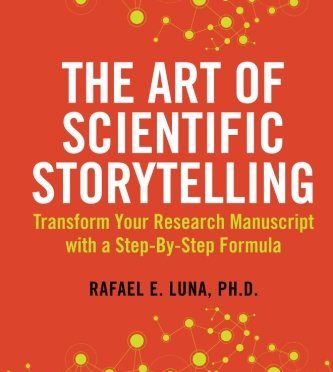At the moment in the USPTO office, a fierce battle is occurring between two scientific teams over patent rights associated with core CRISPR/Cas technology. On one side of the dispute is Jennifer Doudna’s team from UC Berkeley. On the other side is Feng Zhang’s team from the Broad Institute of MIT and Harvard. Both teams were the first labs to demonstrate that the Cas9 enzyme can be directed to cut specific sites in isolated DNA. It will be intriguing to find out who is finally the victor of this contentious debate.
The story of the patent dispute has been lengthy and drawn-out. Jennifer Doudna’s team first filed for patent rights over CRISPR/Cas technology back in May of 2012. Feng Zhang’s team subsequently filed their patent application in December of that same year. Interestingly, Zhang’s team beat Doudna’s team to the punch over patent rights because in October of 2013 they submitted their application for expedited review. Expedited review required the Broad to undergo “accelerate examination,” where they were required to respond quicker to questions asked by the USPTO office. Due to the expedited reviewing process, the patent was ultimately granted to Zhang’s team in April of 2014. Shortly after this event, eleven other CRISPR-related patent applications were filed by the Broad Institute. To counter-attack the Broad’s prompt monopoly over CRISPR-related patents, Doudna’s team requested a patent interference against all CRISPR-related patents filed by the Broad. The USPTO office finally declared the patent interference in January of 2016.
Historically, a patent interference has been a procedure to resolve disputes between two parties over who was the “first to invent.” However, in March of 2013 the USPTO altered the patent system from “first to invent” to “first to file.” Under these new rules, Doudna’s team would have won the CRISPR patent rights because the team was the “first to file” their patent. But since both parties filed their patents before March 2013, the interference procedure defaults under the outdated “first to invent” rules.
The “first to invent” rule has blurred the lines of who is the true proprietor of the patent rights. For over nine months, both parties have been providing evidence claiming they were the “first to invent.” The Broad asserts that Zhang’s team was the first group to demonstrate that CRISPR/Cas technology has applications in editing genes in mammalian cells. They argue that Doudna’s team only described using CRISPR/Cas in bacteria, not in eukaryotes. This distinction is important because some of CRISPR’s most lucrative, future applications will be in gene editing therapies for human diseases. Doudna’s team countered the Broad’s argument by claiming that although her team only demonstrated the use of the technology in bacteria, transferring the technique to mammalian cells was “obvious” and any “person of ordinary skill,” such as a postdoc, could have made that inference. This observation is also important because one of the hallmarks of patentability is that an invention cannot be obvious to a person of ordinary skill. Doudna’s team asserts that the obviousness of the Broad’s patent would make it invalid. The Broad subsequently counter-argued that the shift from bacteria to mammalian cells was “anything but obvious.” This type of back-and-forth between the USPTO, UC Berkeley, and the Broad has been continuing for the last nine months and updated details of the case can be viewed on the Broad’s CRISPR Patent Interference Updates webpage (reference is listed below).
Patent interference cases can last up to two years before appealing to the Federal Circuit. Due to the intense, ongoing clash between the two academic teams, attorneys expect the end date of the CRISPR patent interference case to be sometime in 2017. However, a recent twist in events may close the case completely by the end of this year. This past week, UC Berkeley attorneys submitted a 2013 dated email to the USPTO office. This email was from Feng Zhang to Jennifer Doudna describing his team’s first, published CRISPR paper and mentioning that he has been “very inspired” by her team’s work. This is enough evidence to imply that Zhang’s team had adapted from Doudna’s team’s work and that Zhang’s team was not the “first to invent” the CRISPR/Cas technology. The Broad understands that it’s difficult to counter this piece of evidence. Since the submission of this email, the Broad has asked patent officials to remove four CRISPR-related patents from the interference case in hopes that they can demonstrate novelty of the patents in other ways that are separate from the initial Zhang team’s CRISPR patent. If the Broad can separate these patents from the interference case, then both UC Berkeley and the Broad can walk away with some intellectual property. We will see in the forthcoming weeks how the case plays out.
Although intellectual property was at stake for the two scientific teams, the interference case has been rather unusual in nature. Why has the fight been so bitter and acrimonious? One explanation could be that it’s not the academic institutions that are footing the legal bill for the case but the biotechnology companies that are relying on licensing the patent. Both Doudna and Zhang have started up genome editing companies and if one of those companies has proprietary rights over the CRISPR/Cas technology, that company can collect huge royalties from patent licensing. Perhaps another reason why the dispute has been rancorous is because Doudna and Zhang have their eyes set on a Nobel Prize. CRISPR/Cas technology is revolutionizing the way we do basic science research, the way we treat diseases, and the way we practice agriculture. For these reasons it’s very likely that the scientists behind the technology will receive a Nobel Prize. Regardless of the outcome of the patent interference, the scientific community is certain of one thing: CRISPR has definitely made its mark in patent law history.
References:
- CRISPR Patent Interference Updates. Retrieved from https://www.broadinstitute.org/what-broad/areas-focus/project-spotlight/crispr-patent-interference-updates
- Begley, S. (2016, August 16). CRISPR patent fight: The legal bills are soaring. Retrieved from https://www.statnews.com/2016/08/16/crispr-patent-fight-legal-bills-soaring/
- Cohen, J. (2016, October 5). Dramatic twists could upend patent battle over CRISPR genome-editing method. Retrieved from http://www.sciencemag.org/news/2016/10/dramatic-twists-could-upend-patent-battle-over-crispr-genome-editing-method
- McCall, A. (2016, June 5). The CRISPR Clash: Who owns the groundbreaking, DNA altering technique? Retrieved from http://www.ipwatchdog.com/2016/06/05/crispr-clash-dna-technology/id=69650/
- Ledford, H. (2016, September 21). The Titanic clash over CRISPR patents turns ugly. Retrieved from http://www.nature.com/news/titanic-clash-over-crispr-patents-turns-ugly-1.20631











 wrong, like treating equally qualified people differently when hiring or promoting,” said Calvin Lai, director of research for
wrong, like treating equally qualified people differently when hiring or promoting,” said Calvin Lai, director of research for 

 To add the Sackler calendar to your list of calendars, open Apple Calendar, and select “New Calendar Subscription…” from the “File” menu. Enter
To add the Sackler calendar to your list of calendars, open Apple Calendar, and select “New Calendar Subscription…” from the “File” menu. Enter 